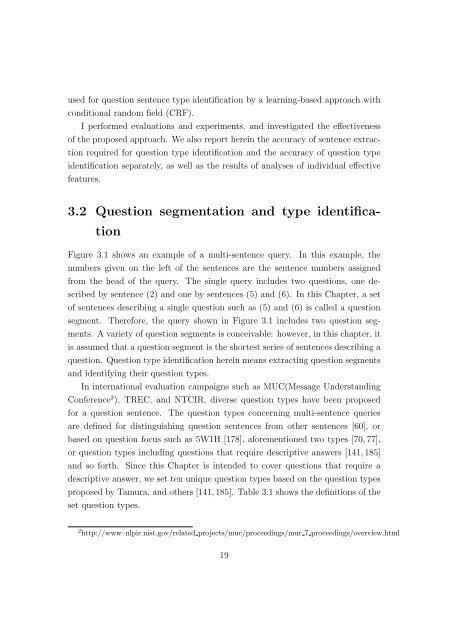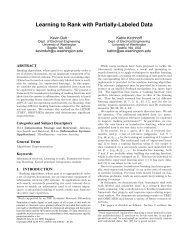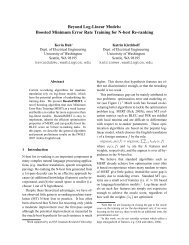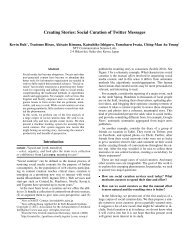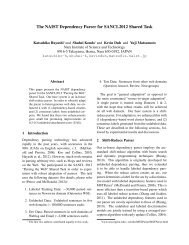file - ChaSen - 奈良先端科学技術大学院大学
file - ChaSen - 奈良先端科学技術大学院大学
file - ChaSen - 奈良先端科学技術大学院大学
- No tags were found...
Create successful ePaper yourself
Turn your PDF publications into a flip-book with our unique Google optimized e-Paper software.
used for question sentence type identification by a learning-based approach withconditional random field (CRF).I performed evaluations and experiments, and investigated the effectivenessof the proposed approach. We also report herein the accuracy of sentence extractionrequired for question type identification and the accuracy of question typeidentification separately, as well as the results of analyses of individual effectivefeatures.3.2 Question segmentation and type identificationFigure 3.1 shows an example of a multi-sentence query. In this example, thenumbers given on the left of the sentences are the sentence numbers assignedfrom the head of the query. The single query includes two questions, one describedby sentence (2) and one by sentences (5) and (6). In this Chapter, a setof sentences describing a single question such as (5) and (6) is called a questionsegment. Therefore, the query shown in Figure 3.1 includes two question segments.A variety of question segments is conceivable: however, in this chapter, itis assumed that a question segment is the shortest series of sentences describing aquestion. Question type identification herein means extracting question segmentsand identifying their question types.In international evaluation campaigns such as MUC(Message UnderstandingConference 2 ), TREC, and NTCIR, diverse question types have been proposedfor a question sentence. The question types concerning multi-sentence queriesare defined for distinguishing question sentences from other sentences [60], orbased on question focus such as 5W1H [178], aforementioned two types [70, 77],or question types including questions that require descriptive answers [141, 185]and so forth. Since this Chapter is intended to cover questions that require adescriptive answer, we set ten unique question types based on the question typesproposed by Tamura, and others [141, 185]. Table 3.1 shows the definitions of theset question types.2 http://www–nlpir.nist.gov/related projects/muc/proceedings/muc 7 proceedings/overview.html19


